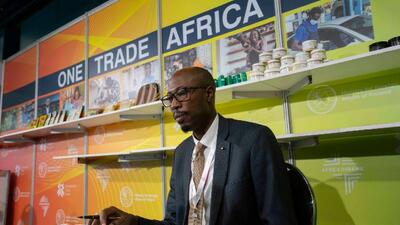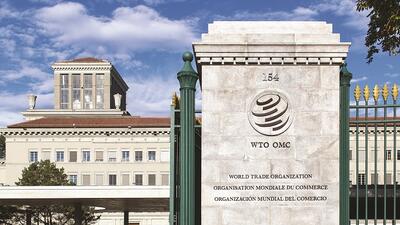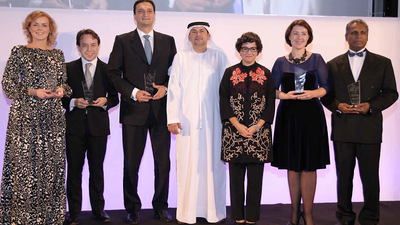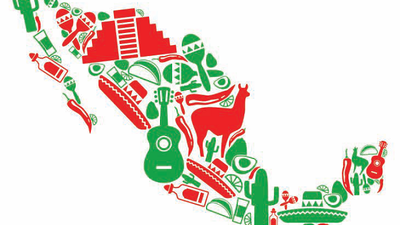Harnessing the spirit of global trade
This year, the International Trade Centre (ITC) celebrates a half-century of work helping the private sector in developing countries to use trade to drive development. This past April also marked a significant anniversary for the World Trade Organization (WTO). It is 20 years since the signing in Marrakesh of the agreements that concluded the Uruguay Round of trade negotiations.
The Uruguay Round talks were one of the most complex negotiations that human history had seen. No fewer than 123 participating governments were involved in its eighth and final year, covering almost all trade, from toothbrushes to telecommunications, and from the tariffs and subsidies affecting rice to the genes within each grain of it. The entry into force of the Uruguay Round agreements transformed the General Agreement on Tariffs and Trade (GATT) into the WTO that we know today, enhancing the scope and strength of the GATT's rules, monitoring, and dispute settlement.
The multilateral trading system, embodied by the GATT/WTO, has for decades been the bedrock for rules-based, non-discriminatory and predictable world trade. Since the system was first set up in 1948, global trade has grown far faster than income, rising from US$ 59 billion per year to over US$ 18 trillion today. Many more countries have acceded to the WTO, bringing the number of members to 159. Successive rounds of liberalization have created the reliably open markets that have allowed many countries to drive growth and climb the ladder of development – in the process, freeing hundreds of millions of people from grinding poverty and the drudgery of subsistence labour. (These are, of course, the same open markets into which ITC's clients have sought to sell their wares.)
Trade, underpinned by the multilateral trading system, has been a vigorous force for growth and development. This trend accelerated from the 1990s, as trade-led growth picked up across large swathes of the developing world. More recently, the WTO system successfully withstood its sternest test to date in the shape of the global financial crisis of 2008. With a big helping hand from WTO monitoring and from the multilateral trading system’s pro-openness norms, members refrained from repeating the beggar-thy-neighbour protectionism that had left everyone poorer during earlier crises. Following an initial sharp fall, as credit markets froze up and demand plummeted, trade recovered quickly. Over the past two years, however, trade growth has slowed, limiting its ability to bolster growth and employment.
A modest uptick in trade growth is projected for this year and next. But, of course, WTO members can actively support trade growth by updating the rules and reaching new trade agreements. The deal at the Bali Ministerial Conference last December illustrates this.
Therefore, the most pressing issue on the multilateral trade agenda is to swiftly conclude the Doha Development Round of trade negotiations. In Geneva, we have two important tasks this year: fully implementing the landmark accord reached in Bali, and agreeing, by December, a work programme for wrapping up the Doha agenda.
A word on the Bali package. As the first multilateral deal reached since Marrakesh, it sent a powerful signal that WTO members can in fact reach agreements, and announced to the world that the WTO was back in business. Bali delivered some immediate economic benefits as well. Economists suggest that the accords reached in Bali could, once implemented, provide a boost of up to a trillion dollars to the world economy. The lowered trading costs and simplified customs procedures arising from the Trade Facilitation Agreement are of particular significance for small and medium-sized enterprises – creators of the bulk of the world’s jobs, not to mention ITC’s core constituency – which cannot match their larger competitors’ capacity to navigate through complex bureaucracies. The package also includes steps to help developing-country governments ensure food security, and measures to build on earlier decisions in favour of least developed countries (LDCs).
Turning to the work programme on the conclusion of the Doha Round, it scarcely needs saying that the Round has already gone on for too long. As WTO Director-General Roberto Azevêdo has told members, concluding the Doha Round will mean finding solutions for the areas that were the major source of the negotiating impasse back in 2008: agriculture, industrial goods and services. Consultations in Geneva on how to move forward on these and other outstanding Doha issues have been constructive, and are gathering pace towards the December deadline for finalising the work programme. Our aim is nothing less than to conclude the Round, and to do so as quickly as possible.
These negotiations dominate the public perception of the WTO, but of course we do a lot of work in other areas, too.
The dispute settlement system remains one of the WTO’s crown jewels. Over the past two years, members have brought 47 disputes to the Dispute Settlement Body – revealing trade tensions in the international community, but at the same time clearly demonstrating governments’ confidence in the WTO’s ability to resolve commercial conflicts.
The WTO’s permanent machinery is not only about disputes, either. The WTO’s ‘regular’, or non-negotiating, committees do important work. There are around 20 of these committees, covering the range of WTO issues, from agriculture and development to health and safety standards and technical regulations. Their delegates notify and discuss each other’s policies and concerns, and they often cordially resolve issues between trading partners without the need for dispute settlement.
Meanwhile, WTO monitoring activities provide the transparency about members’ policies that is critical to the operation of a rules-based system. In addition to regular reporting on G-20 countries’ trade-restricting measures and the broader trading environment, regular comprehensive reviews of members’ trade policies enable trading partners to understand each other’s policies, and to seek clarification when necessary.
Our technical assistance and training programmes help equip our developing and least developed members with the tools they need to assess and pursue their interests effectively within the trading system. The Aid for Trade initiative continues to promote coherence and coordination among donors and countries seeking to use development assistance to boost their integration into the global marketplace. This includes the Enhanced Integrated Framework, on which the WTO and ITC partner with other international organizations to help LDCs expand their participation in international trade.
Essential as these other pillars are, the WTO will continue to be defined by the progress we make in negotiations. The Bali Package showed what we can achieve. Now we have to do it again. So, on the occasion of its 20th anniversary, let's harness the spirit which helped us to deliver the Marrakesh Agreement, so that it inspires us to tackle the challenges that are before us today.








